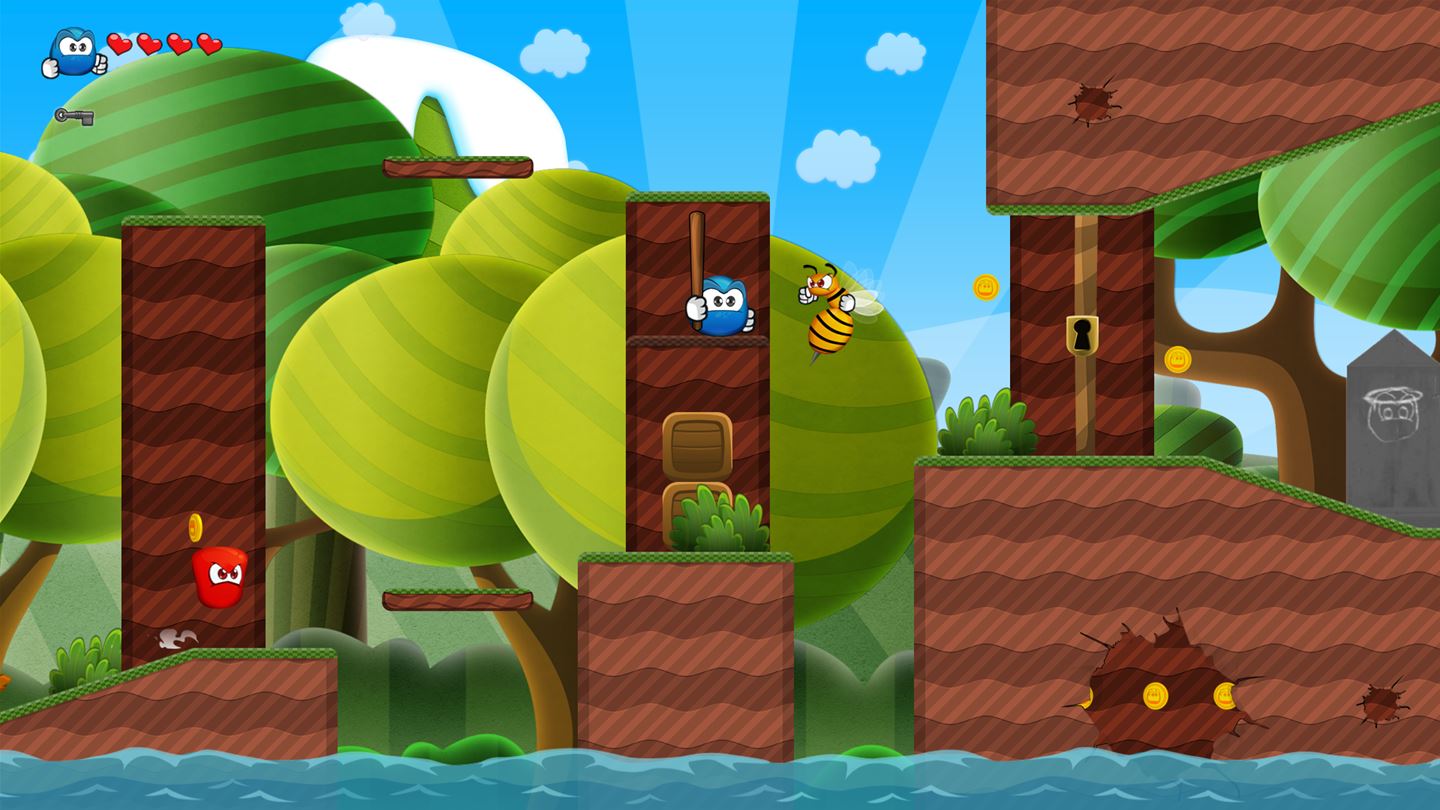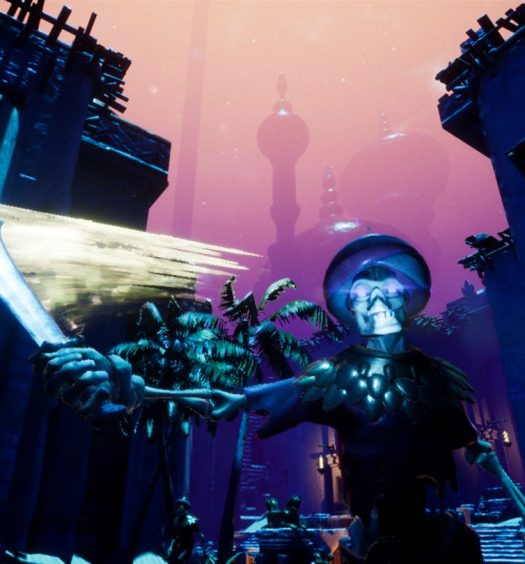Games such as Celeste and Super Meat Boy have shown us that with the right execution, a platformer with the difficulty ramped up can be quite the success. Both games feature short tidbits between levels that have you jumping from wall to wall avoiding spikes, swinging spiked maces and various other hazards. The game constantly checkpoints after a section of a level or world is finished so the player always feels they are making some sort of progress. The game has no time constraints allowing the player all the patience they require to complete a level based on their playstyle. Bounce Rescue, a title developed by Bitecore looks to try and follow in this success in games with a challenging 2D side-scrolling platformer. Can we expect another hit from the title, or has Bitecore bitten off more than it can chew?
As soon as you start your adventure in Bounce Rescue, you’ll quickly notice the absence of any story beyond what is given on the store’s page for the game. Bounce Rescue has you progressing through 50 challenging levels either solo or through 2-player co-op. The game has various characters to choose from, with some that can be unlocked by completing worlds and defeating a boss. There are ten total levels in a world, nine of them are side-scrolling levels where you collect keys and make your way to the exit. The tenth level is where you challenge a boss. If you’re successful in defeating the boss, you rescue a team member who becomes a new playable character, and you move to the next world. The concept sounds simple, but it’s clouded by a large amount of poor design.
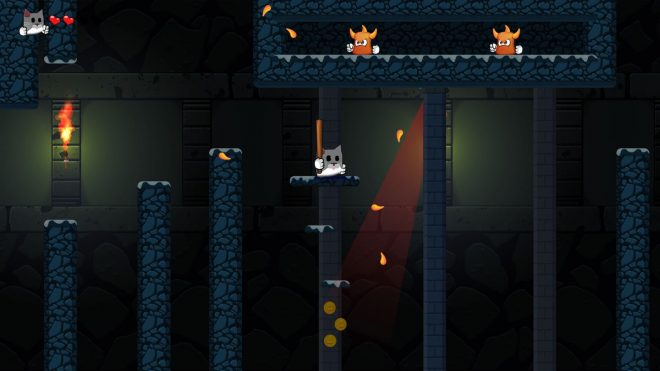 What I liked:
What I liked:
Level Graphics – Large portions of levels can clearly be seen taking a nod from games like Sonic the Hedgehog and Super Mario Bros. Some of the more noticeable times are during the later sand and cave levels. While the patterns of the hill areas aren’t exactly patterned like they were in Sonic the Hedgehog, they use the exact dark and light brown color scheme that any player familiar with the Green Hill Zone would know. The quicksand areas of the desert levels really take a nod to Super Mario World, as well as various other textures included.
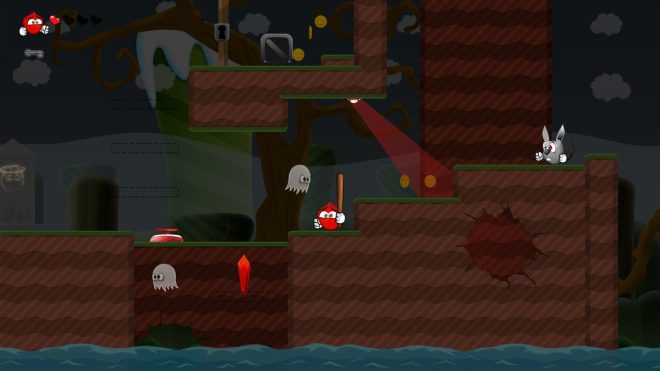 What I didn’t:
What I didn’t:
Level Progression – During some of the earlier levels, Bounce Rescue is a little more lenient on the difficulty by spacing out checkpoints adequately. The first checkpoint is relatively close to the starting point, with the second and sometimes third checkpoints being right past a puzzling area. After the player reaches roughly level eight of the first world it starts to become very noticeable how over-spaced the checkpoints are from one another. The first checkpoint remains close to the start of the level, the next one after however is usually a distance away. The issue starts to become irritating when you complete a large section only to die by something stupid and find yourself progressing all the way back to the checkpoint. Once you reach the second world, the first checkpoint is then moved much further into the level. It’s at this point you notice you spent a large portion of time doing a difficult platforming segment just to die. Then begins the painful extent of watching the screen scroll all the way back to the start of the level and place your character back. It really starts to feel like you aren’t making any progress at this point.
Time Limit – If the checkpoint spacing wasn’t enough of a smack in the face, the player will really start to feel the aggravation once they realize there’s a time limit in the level. The moment you load into a level, the time limit is displayed for a short period of time. If you aren’t focused on the top middle of your screen, this timer will vanish, and you’ll be clueless about its existence until it reaches 1 minute. Most levels give you five minutes and 30 seconds to complete a level. Obviously, during the earlier levels, this isn’t that big of a deal because these levels are short and the difficulty isn’t present. In the later levels, players can find themselves stuck at a certain part of a level. You try again and again to make it past this part, constantly failing up until when finally, you manage to make it past that part. At this point, either one of two things will happen. You’ll either die before you reach a checkpoint, which will take you back before that point to a previous checkpoint, or the 1:00 timer will reappear at the top of your screen. It’s at this time you have exactly one minute to make it to the exit of the level. If you fail to make it there, you’re met with a game over type screen and are forced to start the level over from the very beginning. This concept gets infuriating about midway through the game when you start to notice how long a level can take, and how little margin for error you have. It’s at this point it seems the developer is demanding perfectionism from the player. The weirdest thing is that the timer can be re-revealed again for a short time by pressing the Y button during a level. However, the controls image on the loading screen does not list this.
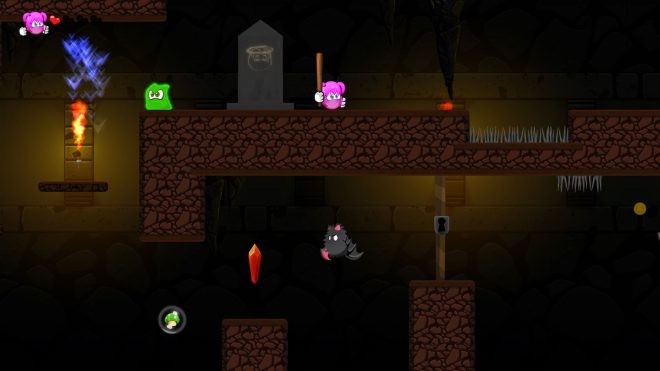 Health Bar – At the top of the screen near the portrait of your character contains a health bar. Your character has four hearts of health. Reaching zero hearts will lead to death and will result in you being taken back to the nearest checkpoint. In most games with a health system such as this, contact with an enemy or being attacked by an enemy will result in one half or one whole heart being taken from you. In Bounce Rescue, most hazards are a one hit kill. Enemies can vary. Some enemies instantly kill you while others have to hit you twice. When you die, you only gain back two of the four hearts you have. There are sometimes heart pickups in a level to bring you back to full. These pickups are in most cases useless as most times you can grasp one you’ll be hit immediately after. These pickups do not respawn unless the level is restarted. It really makes you wonder why the health bar even exists as a mechanic.
Health Bar – At the top of the screen near the portrait of your character contains a health bar. Your character has four hearts of health. Reaching zero hearts will lead to death and will result in you being taken back to the nearest checkpoint. In most games with a health system such as this, contact with an enemy or being attacked by an enemy will result in one half or one whole heart being taken from you. In Bounce Rescue, most hazards are a one hit kill. Enemies can vary. Some enemies instantly kill you while others have to hit you twice. When you die, you only gain back two of the four hearts you have. There are sometimes heart pickups in a level to bring you back to full. These pickups are in most cases useless as most times you can grasp one you’ll be hit immediately after. These pickups do not respawn unless the level is restarted. It really makes you wonder why the health bar even exists as a mechanic.
Unkillable Enemies – Once you reach the second world, you’ll start coming into contact with enemies that cannot be killed. These enemies can be attacked, which will cause them to either vanish or go into a docile state. This happens for a very short time, then said enemy would either reappear or start moving again. These enemies are infuriating. The ghost enemies of the second world vanish upon being attacked. Chances are when they reappear they will be right on top of your character which will cause you to either take damage or kill you right out. Other enemies such as the mummy balls in world three patrol small platforms. You are required to jump and swing at them to knock them out. You have about a half a second of time to think or act before they reawaken and become hostile again. Granted, you can easily knock them out again, but chances are the moment they become hostile again, they will make contact with your character by damaging or killing you before you can react to them. It really has you wondering why you even have a weapon at this point.
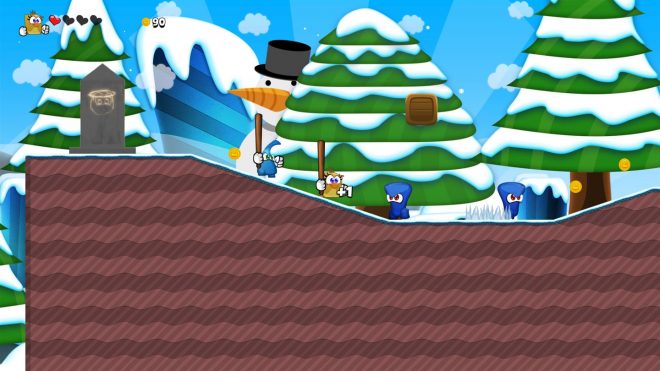 Simple Bosses – Through the progression of the first two worlds, the two bosses that we were required to fight failed in comparison to the difficulty of the levels themselves. If you’ve ever played a Super Mario Bros. game, then you should have no issues fighting these bosses. The first boss wears a baseball looking helmet and causes tremors in a cave. The player simply needs to dodge the falling rock. When the boss appears, the player simply needs to jump on the boss’s head. The boss with then flee and the process starts again. The tremors get a bit heavier each time, but it’s nothing too perplexing. After about four hits you defeat the boss. The second is almost the exact same. The fight has you avoiding spiky balls thrown out by the boss. After about four or five thrown, he will swoop down to the ground. The player simply needs to jump on the boss, which will injure him and start the process again. The only difference in waves is how many spike balls the boss throws out at the start of the wave. The player can easily attack the balls to keep them from damaging. Four hits to the boss and he is defeated. It’s confusing why these fights are so simple compared to the convoluted levels leading up.
Simple Bosses – Through the progression of the first two worlds, the two bosses that we were required to fight failed in comparison to the difficulty of the levels themselves. If you’ve ever played a Super Mario Bros. game, then you should have no issues fighting these bosses. The first boss wears a baseball looking helmet and causes tremors in a cave. The player simply needs to dodge the falling rock. When the boss appears, the player simply needs to jump on the boss’s head. The boss with then flee and the process starts again. The tremors get a bit heavier each time, but it’s nothing too perplexing. After about four hits you defeat the boss. The second is almost the exact same. The fight has you avoiding spiky balls thrown out by the boss. After about four or five thrown, he will swoop down to the ground. The player simply needs to jump on the boss, which will injure him and start the process again. The only difference in waves is how many spike balls the boss throws out at the start of the wave. The player can easily attack the balls to keep them from damaging. Four hits to the boss and he is defeated. It’s confusing why these fights are so simple compared to the convoluted levels leading up.
Character Design – The game features 16 different characters for you to play. Every time you start a level, you will be asked which character you want to play. From the outside, it would appear that the characters are just a skin. But as you play as different characters, you will start to notice that some control differently than others. That is because each character has something that makes them unique. The game fails to tell you exactly what makes each character special, so it’s up to the player to figure out. Some characters run faster; others jump higher. The character select altogether just feels lazy. The game shows characters a shadowed silhouette of characters that are locked but offers no description on how to unlock them.
Jump lag – Probably the biggest issue with Bounce Rescue focuses on the jump in the game. It’s not noticeable from the beginning, but during some of the later levels, you may notice yourself falling to your death quite a bit. The issue here pertains to the jump in-game. At random times despite pressing either of the two jump buttons the game just won’t register the button press and your character will fail to jump. This can lead to easy, unfair deaths to the player for a mechanic that’s the core of any platforming game. Later levels have you doing continuous jumps in one run. It’s at this point you’ll find yourself hoping that the jump doesn’t fail. This was tested with two separate controllers. Both controllers fairly new and both ending with the same result.
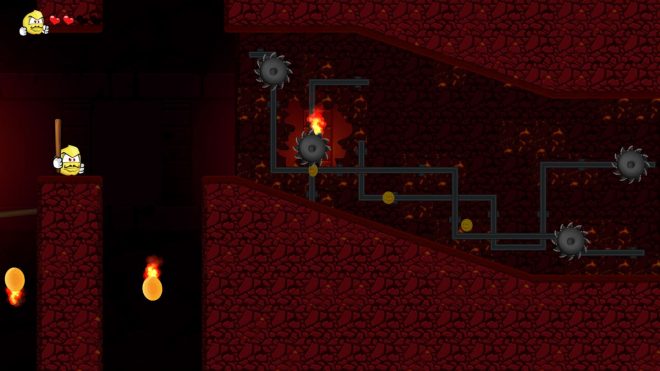 Wrap-Up:
Wrap-Up:
Bounce Rescue is the type of game that you go in expecting one thing but come out with something else altogether. The levels are difficult, but the real difficulty of the game comes from all the aggravation the player will deal with from their jumps not registering, constant deaths from invulnerable enemies, the irritating progression back to your most recent checkpoint and the constant failures due to not meeting the time constraints. It’s really the type of game that you wouldn’t recommend to anyone based on how much it fails on all fronts. We made it about halfway through the game. It was at this point the game stopped feeling fun in any sense but started feeling more like a senseless chore for completion. For price tag, it might look appealing, but if you spend a little more on a game like The Adventure Pals or Celeste, you’re guaranteed to have much more fun all while keeping the integrity of your sanity.
Score: No Appeal
Bounce Rescue was Developed and Published by Bitecore Ltd. The game released on May 4, 2018, for $9.99. A copy was provided for review purposes.

